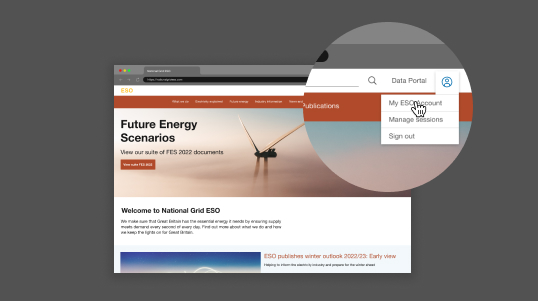We recognise the challenges currently facing our connections customers and the need to update the connections application process. As a result, we launched the Connections Reform project to address these challenges and put our customers and stakeholders at the heart of this change.
This reform project forms part of our longer-term vision for change to the connections process. We also have a number of short-term initiatives to speed up connections to the grid, through our five-point plan.

Phase 3 updates
We are pleased to provide you with a high level overview of our enhanced First Ready, First Connected approach (referred to as ‘TMO4+’). This document summarises significant progress made since our final recommendation report, which was published in December 2023.
Our commitment to enhancing the connections process has been worked on through extensive engagement and valuable input from stakeholders, including the Connections Process Advisory Group (CPAG). In response to these collaborative efforts, we are now also recommending the application of the ‘Gate 2’ approach to the existing queue. This is effectively the preferred model we recommended in December 2023 but with this addition and further targeted amendments. This strategic decision is aimed at better meeting our reform objectives and those within the Connections Action Plan, as well as ensuring a smoother and more efficient process in future.
Final recommendations report
We have published our final recommendations on 5 December 2023. These can be viewed on the key documents tab in the December 2023 Final Recommendations section. We will now start a detailed process design and implementation phase, to conclude in January 2025.
Download the final recommendations summary
We hosted a series of events in December to share our final recommendations in more detail and show how it links to wider industry reforms including Ofgem and Department for Energy Security and Net Zero's Connections Action Plan and the ENA 3 point plan.
December 2023 Final Recommendations
Summer 2023 consultation
| Name | Published Sort ascending |
|---|---|
| Consultation launch events Q&A | 10 Jul 2023 |
| Connections Reform Summary | 12 Jun 2023 |
| Appendix 6 - Target Model Add-ons | 12 Jun 2023 |
| Appendix 4 - Initial Recommendations Overview | 12 Jun 2023 |
| Appendix 1 - Stakeholder Engagement | 12 Jun 2023 |
| Appendix 3 - International case studies | 12 Jun 2023 |
| Appendix 7 - Consultation Questions | 12 Jun 2023 |
| Appendix 5 - Case Studies | 12 Jun 2023 |
| Appendix 2 - Design Criteria Assessment | 12 Jun 2023 |
| Connections Reform Consultation | 12 Jun 2023 |
Summer 2023 consultation responses
| Name | Published Sort ascending |
|---|---|
| Response 65 - Solar Energy UK | 18 Oct 2023 |
| Response 58 - (SSEND) | 18 Oct 2023 |
| Response 41 - IB Vogt | 18 Oct 2023 |
| Response 59 - IGP | 18 Oct 2023 |
| Response 80 - SEAS | 18 Oct 2023 |
| Response 21 - INA | 4 Sep 2023 |
| Response 23 - ADE | 4 Sep 2023 |
| Response 26 - Banks Group | 4 Sep 2023 |
| Response 29 - Uniper | 4 Sep 2023 |
| Response 31 - ABP | 4 Sep 2023 |
Steering group documents
Consultation launch: summer 2023
Design sprints webinar: spring 2023
| Design sprints documents |
|---|
| Connections Reform design sprint outputs - May 2023 |
Case for change webinar: winter 2022/23
| Case for change documents |
|---|
| Case for change presentation - 12/13 Dec 2022 |
| Case for change webinar recording - 10 Jan 2023 |
| Case for change FAQs |
Phase 2 enabled us to co-create the solutions to the challenges we identified in Phase 1, through working with industry-wide stakeholder groups to create and test a series of options for implementation. This culminated in the launch of our consultation on our proposals.
Our consultation was live for six weeks between 13 June and 28 July. We would like to thank all of our stakeholders for their feedback which will help to shape the future of the connections process.
All formal Connections Reform consultation responses received are now under review. We are now working with our stakeholder governance groups to establish our final recommendations and refine our proposals on how to implement and transition to a new operating model.

We spent phase 1 gathering stakeholder views to understand the current challenges with the connections application process, and articulated the case for change. We’ve met with over 100 customer, stakeholders and industry participants to hear your views on the current connections process. The case for change report pulls together all that feedback in to one central place.
GB Connections Reform – Case for change report
We have now finished pulling together your feedback for the GB Connections Reform – Case for Change. We’ve met with over 100 customer, stakeholders and industry participants to hear your views on the current connections process.
This report pulls together all that feedback in to one central place to enable us to progress to Phase 2, which will investigate options.
Get in touch
Stakeholder views form a key part of the Connections Reform project. There are a number of ways to get in contact with us, ask us questions and have your say.
Visit our calendar to sign up to our 2024 events.
Subscribe to the connections reform mailing list.
Speak to the connections reform team.





